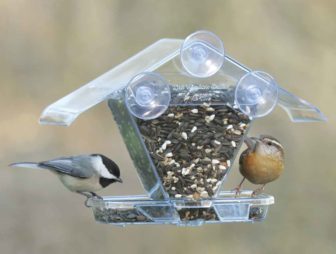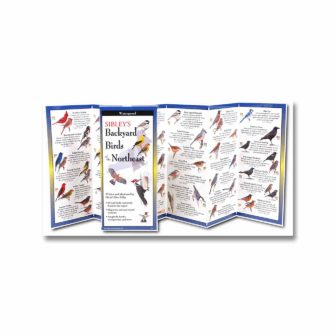How to Identify a Bird
A new bird feeder or nesting box certainly brightens up the yard!
And, so begins a new hobby – bird identification. Here’s a step by step process on how to identify a bird.
One quickly realizes that there are birds right in our own backyards and neighborhoods that we may not have noticed or heard before.
Isn’t it nice to give a name to nearby familiar and beloved trees, bushes, plants and…our feathered neighbors?
How to even begin to figure out what they are? We are big fans of paper field guides. There are good apps out there, but having a reference book is essential.
And what about chirps and twitters… is it possible to identify birds by their calls? Birds all have their own unique calls and songs, and yes, there’s even an easy way to learn these. We call this “birding by ear”, and knowing songs and calls comes in really handy when birds are obscured by leaves.
- One big key to begin the ID adventure, is to ask yourself what size the bird is – use a familiar bird for reference – is it smaller or bigger than a Robin? Almost everyone knows what an American Robin is, and you can quickly make a mental note.
- Second, where are you seeing it – perching on a bird feeder, on the ground, in a bush, high in a tree, swimming or wading in the water, walking or swimming in a marsh?
- Third, look for how it holds itself – is it perching on a branch, climbing on the side of a tree, wading, diving in the water?
- Fourth, color – look at the legs, bill, back, crown, breast – and note anything unusual (like a white line above the eye, dark legs, yellow feet, red spot on the head).
- Look at the shape of the bill – is it hook shaped (bird of prey), conical (finch), long and pointed (woodpecker), etc.
- Song or call, is it making a sound? Can you record it? Cell phones come in handy for both recording voice and snapping pics (or video!)
- Behavior figures in, what is it doing? Is it kicking around in leaf litter or pecking in the crevice of a tree, is it soaring overhead?
- And, is it solitary or in a group of several?
- Knowing what time of year birds are in your state also helps winnow down the possibilities. For example, we’re unlikely to see a Great Egret here in CT in winter. We ask ourselves (as we were taught) “what should be here, now?” As in, look for the obvious before the unusual. Range maps inside field guides will give you seasonal occurrences for every bird.
There are a lot of good tools in field guides, behavior guides, and bird song recordings by region.
First, get a bird field guide for your region. The US is divided east and west, roughly by the Mississippi River. An eastern field guide such as the Sibley Eastern Guide will have every commonly occurring bird east of the Mississippi, south into Mexico and north into Canada. There is an equally good Sibley Western Guide. There are certainly lots to choose from, and our North American Field Guide category has our favorites.
Instead of a field guide for the whole US, you have automatically winnowed out those birds that you are less likely to see. The Folding Field Guides are wonderful for more commonly seen birds, easy to carry, very easy to use and GREAT for kids.
Second, look for guided walks that take place during the week. Spring and Fall are especially good times to go birding, as birds are moving south or moving north. Perhaps you have a local club that visits a good place to go birding nearby. Some walks are geared towards young families and kids. Take advantage of that!
Third, the best way to learn bird calls starts with learning the more common calls. A class (and 3 CD recording and booklet) called Birding By Ear opened up a new method of listening for us and is the best place to start, for those of us here in the east.

The Aspects Window Cafe is a great little feeder. Here’s a Black-capped Chickadee on the left and a Carolina Wren on the right.
There’s a bit to it, but the more you’re out there looking, the easier it gets. Bring an extra layer of clothing, a water bottle, a field guide and binoculars and above all – Have Fun!







